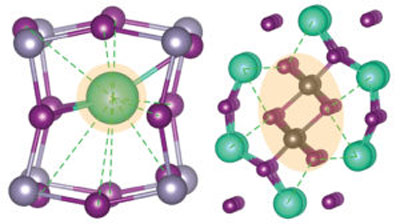
A newly discovered collective rattling effect in a type of crystalline semiconductor blocks most heat transfer while preserving high electrical conductivity – a rare pairing that scientists say could reduce heat buildup in electronic devices and turbine engines, among other possible applications.
A team of users at the Molecular Foundry discovered these exotic traits in a class of materials known as halide perovskites, which are also considered promising candidates for next-generation solar panels, nanoscale lasers, electronic cooling, and electronic displays.
These interrelated thermal and electrical (or “thermoelectric”) properties were found in nanoscale wires of cesium tin iodide (CsSnI3). The material was observed to have one of the lowest levels of heat conductivity among materials with a continuous crystalline structure.
“Its properties originate from the crystal structure itself. It’s an atomic sort of phenomenon,” said Woochul Lee, a postdoctoral researcher at Berkeley Lab who was the lead author of the study, published the week of July 31 in the Proceedings of the National Academy of Sciences journal.
Within the material’s crystal structure, the distance between atoms is shrinking and growing in a collective way that prevents heat from easily flowing through.
But because the material is composed of an orderly, single-crystal structure, electrical current can still flow through it despite this collective rattling. Picture its electrical conductivity is like a submarine traveling smoothly in calm underwater currents, while its thermal conductivity is like a sailboat tossed about in heavy seas at the surface.
Two major applications for thermoelectric materials are in cooling, and in converting heat into electrical current. For this particular cesium tin iodide material, cooling applications such as a coating to help cool electronic camera sensors may be easier to achieve than heat-to-electrical conversion.

